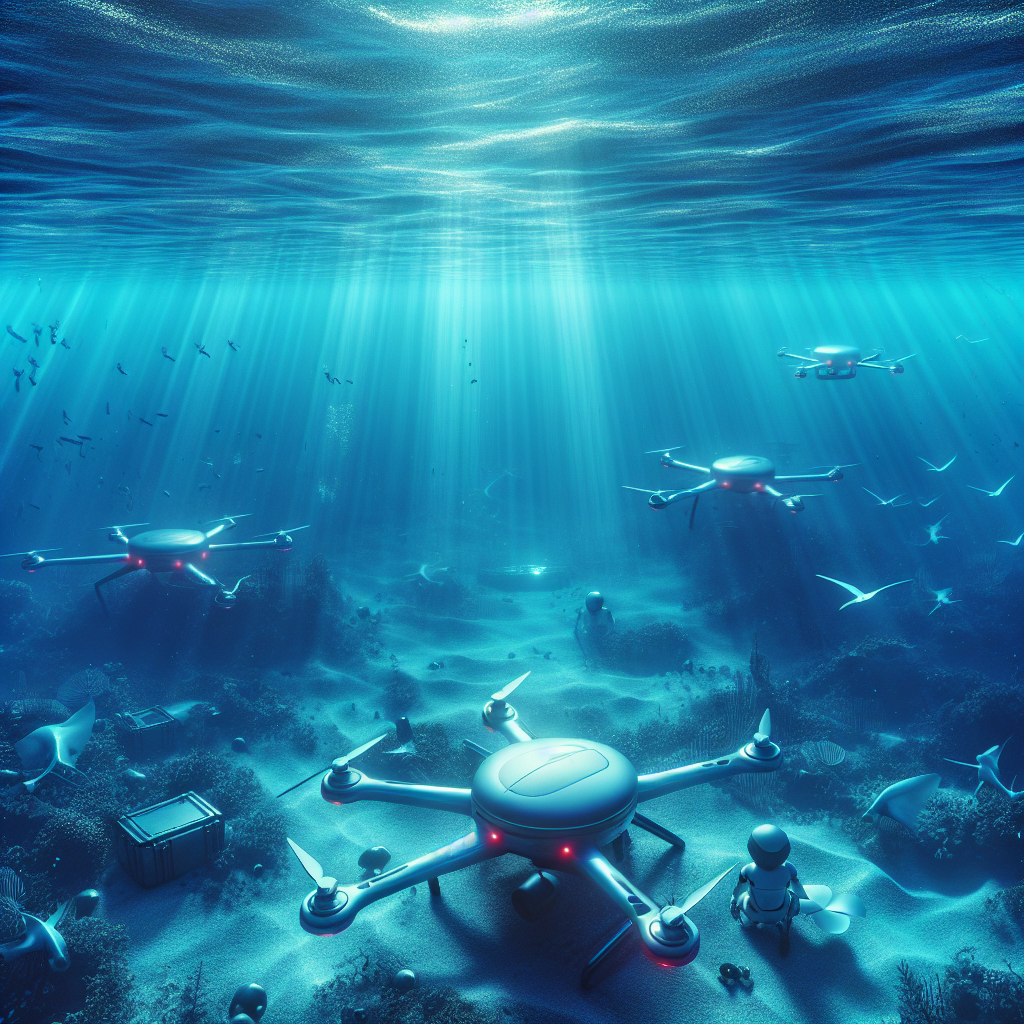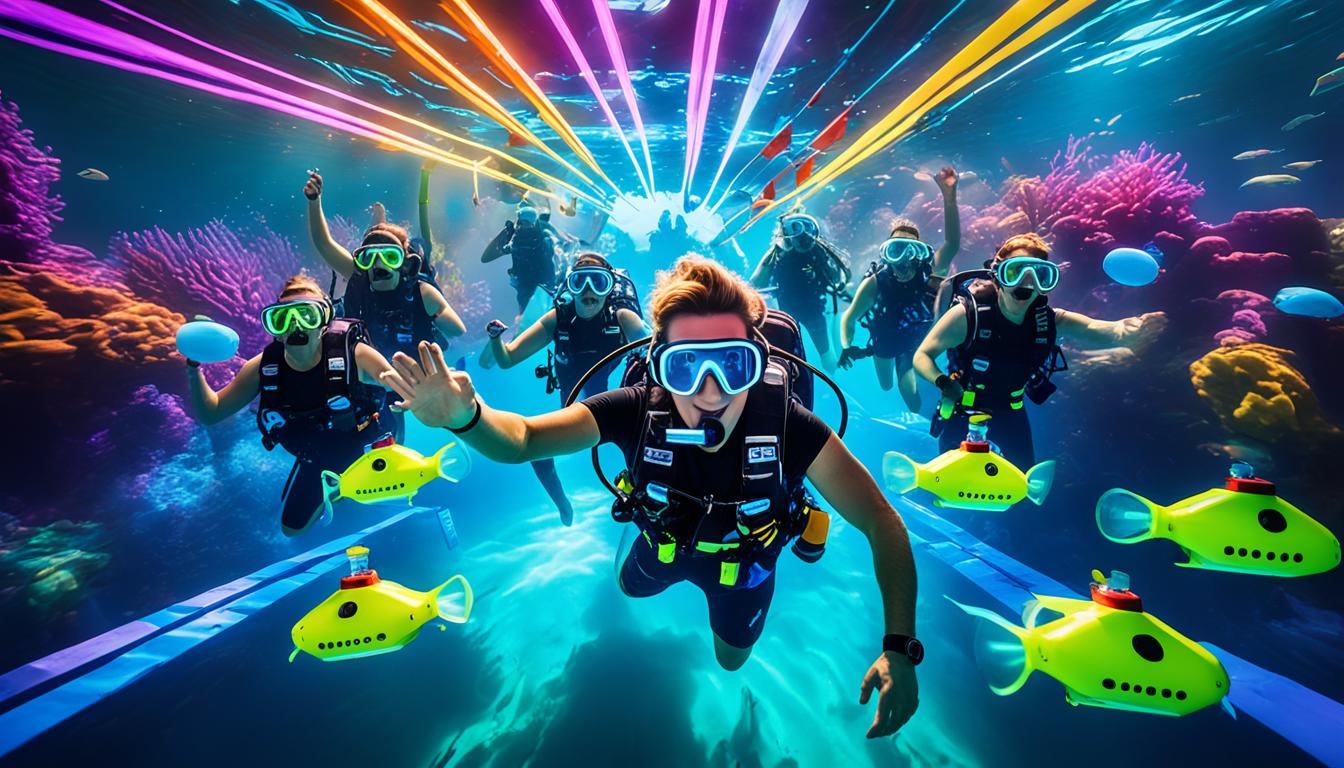
Key Takeaways
- Underwater drones, also known as AUVs and ROVs, have evolved from simple tethered devices to sophisticated autonomous machines.
- Modern underwater drones are equipped with high-definition cameras, sonar systems, and advanced sampling equipment for detailed exploration.
- The Chasing Gladius Mini S Upgraded Underwater Drone is known for its agility and user-friendly interface, making it a top choice for enthusiasts.
- The Chasing Dory Underwater Drone is compact and perfect for casual exploration in shallower waters.
- Underwater drones face challenges such as deep-sea pressure resistance and communication, but technological advances continue to address these issues.
Diving into the Evolution of Underwater Drones
The Advent of Underwater Exploration
Imagine slipping beneath the waves, where a different world exists, full of mysteries waiting to be uncovered. That’s the allure of the ocean, and for years, it was a realm reserved for skilled divers and expensive submersibles. But now, there’s a game-changer in town – underwater drones. Initially, these were simple tethered devices, allowing us a glimpse into the deep. But as curiosity grew, so did technology.
From Tethers to Autonomy: A Technological Leap
As we demanded more freedom to explore, the drones evolved. Tethers gave way to wireless communication, and manual controls became intelligent, autonomous systems. These leaps in technology meant we could go further, dive deeper, and discover more without ever getting our feet wet.
Breaking Boundaries: Today’s Cutting-Edge Abilities
Today’s underwater drones are marvels of engineering. They come equipped with cameras that can capture the vibrant life in the depths in crystal-clear detail. They’re not just for scientists and filmmakers; these drones are for anyone with a passion for exploration. With intuitive controls and robust designs, they’re breaking down the barriers between us and the deep blue.
Decoding Modern Underwater Drones
Understanding AUVs and ROVs
Let’s get to know our underwater allies. There are two main types of underwater drones: Autonomous Underwater Vehicles (AUVs) and Remotely Operated Vehicles (ROVs). AUVs are the set-it-and-forget-it kind; they can navigate the underwater world independently after you program them. ROVs, on the other hand, are like remote-controlled cars; you direct their every move from the surface.
- AUVs (Autonomous Underwater Vehicles) operate independently and are often used for scientific research or mapping the seafloor.
- ROVs (Remotely Operated Vehicles) are controlled by a person, usually from a boat or shore, and are great for more hands-on exploration.
Both types have their perks, and the choice between them depends on what you’re looking to discover underwater.
The Mechanics of Movement Beneath Waves
Underwater drones glide through the water thanks to their propulsion systems, which typically include thrusters and sometimes even fins that mimic marine animals. Maneuvering is a ballet of precision, with the drone responding to your commands or its programming to tilt, turn, and dive.
Powering the Depths: Advances in Energy Efficiency
As we send our mechanical scouts deeper and for longer, energy efficiency becomes key. Batteries are now more potent and longer-lasting, ensuring that underwater drones can endure extended missions. It’s all about maximizing time spent exploring and minimizing time recharging.
Choosing the Right Underwater Drone for Discovery
Chasing Gladius Mini S Upgraded: The Agile Explorer
For those looking to dip their toes into underwater exploration, the Chasing Gladius Mini S is a perfect companion. It’s nimble, with a sleek design that allows it to maneuver around obstacles with ease. The upgraded version boasts improved battery life and a 4K camera to bring the underwater world to your screen in stunning detail.

Chasing Dory: Compact Companion for Shallow Adventures
If you’re just starting out or prefer to stay in shallower waters, the Chasing Dory is your go-to. It’s small enough to fit in a backpack but packed with features like a high-definition camera and built-in buoyancy control. It’s the underwater drone for every family outing or casual snorkeling trip.

FIFISH V-EVO: Capturing the Ocean in 4K60FPS
The FIFISH V-EVO is a powerhouse when it comes to capturing high-quality underwater footage. Boasting 4K60FPS video capabilities, it’s designed for those who don’t want to compromise on the clarity of their aquatic adventures. With its powerful propulsion system, it can navigate strong currents, ensuring stable footage even in challenging conditions.

PowerVision Powerray Explorer: The Oceanographer’s Choice
When it comes to specialized research and detailed underwater mapping, the PowerVision Powerray Explorer is at the forefront. Its sonar system can map the topography of the ocean floor, making it invaluable for oceanographers and researchers. The addition of a bait drop makes it perfect for those looking to combine exploration with a bit of fishing.

QYSEA FIFISH V6 Expert M200A: The Professional’s Partner
For professionals demanding top-tier performance and versatility, the QYSEA FIFISH V6 Expert M200A stands out. Its 360-degree camera rotation and 6 thrusters provide unparalleled control and stability, essential for intricate tasks and detailed inspections. It’s a tool for serious underwater videography, research, and industrial inspections.

Utilizing Underwater Drones for Exploration and Research
Underwater drones open up a world of possibilities for exploration and research. They allow us to venture into the unknown, to places where humans can’t easily go. Scientists use them to monitor marine ecosystems, map the ocean floor, and study the impacts of climate change. Explorers use them to discover sunken treasures and unravel the secrets of the deep.
Navigating Uncharted Territories
One of the most exciting aspects of underwater drones is their ability to take us to uncharted territories. These machines can dive into the abyss, exploring caves and crevices that have never been seen before. They bring back images and data that can change our understanding of the underwater world.
Environmental Monitoring and Conservation Efforts
Environmentalists and conservationists are turning to underwater drones to keep an eye on the health of our oceans. Equipped with environmental sensors, these drones collect data on water temperature, pollution levels, and the presence of harmful algae blooms. They’re powerful allies in the fight to protect our marine habitats.
Wreckage Investigation: Unveiling History’s Mysteries
Underwater drones also play a crucial role in investigating shipwrecks and airplane crash sites. They allow us to document these sites without disturbing them, preserving history for future generations. Through their cameras, we can witness the resting places of historic vessels and uncover stories long lost to the waves.
Overcoming Challenges in Underwater Droning
Exploring the depths is not without its challenges. Underwater drones must overcome communication barriers, operate under extreme pressure, and navigate in pitch darkness. But with every problem comes a solution, and technology is keeping pace with our ambitions.
Communication Limitations and Solutions
One of the biggest challenges is maintaining communication with the drone as it dives deeper. Water can absorb radio waves, making it difficult to control the drone. To counter this, drones use acoustic signals and tethered cables for uninterrupted communication, ensuring the pilot on the surface stays in control.
Dealing with Deep-Sea Pressures
Deep-sea exploration requires drones to withstand immense pressures that would crush most equipment. Advances in materials and engineering have led to drones that can dive to several thousand meters without succumbing to the pressure. This resilience opens up new frontiers for exploration and research.
Note: This is part 2 out of 3 parts of the article.
Ensuring the safety of both the drone and the habitats they explore is paramount. As stewards of the ocean, we must design and operate our drones in a way that minimizes disturbance to marine life and their environments. This includes being mindful of the drone’s noise and physical presence, which could potentially disrupt the behavior of sea creatures.
Towards an Unbounded Oceanic Future
The Next Wave: Predictions for Future Advances
The future of underwater drones holds endless possibilities. We’re looking at drones that could be powered by renewable energy sources, such as wave or solar power, making them even more eco-friendly. Advances in AI will likely give drones more autonomy, allowing them to make real-time decisions during missions and adapt to unexpected situations.
Expanding Human Reach: The Potential of Underwater Drones
Underwater drones are not just expanding our knowledge of the ocean; they’re extending our reach. In the not-too-distant future, we could see them being used for tasks like repairing underwater structures or even aiding in search and rescue operations. They have the potential to become an essential tool in safeguarding human lives and the integrity of our maritime infrastructure.
Conservation and Stewardship: Drones as Ocean Guardians
Most importantly, as our eyes beneath the waves, underwater drones have the potential to become ocean guardians. They can monitor protected areas, track the health of endangered species, and help enforce laws against illegal fishing and pollution. Their role in conservation is just beginning to be tapped, and it’s a field ripe for innovation and dedication.
Frequently Asked Questions
How do underwater drones navigate without GPS?
Without GPS signals underwater, drones rely on inertial navigation systems, which track movement from a known position using accelerometers and gyroscopes. Some also use acoustic beacons placed on the seafloor to triangulate their position, ensuring they know where they are and where they’re headed.
Can underwater drones withstand extreme ocean depths?
Yes, many modern underwater drones are built to withstand the crushing pressures of the deep ocean. For example, the QYSEA FIFISH V6 can dive to depths of 100 meters, and there are even drones capable of descending thousands of meters, like the deep-diving AUVs used by researchers and the oil and gas industry.
How long can underwater drones operate on a single charge?
The operational time on a single charge varies among underwater drones. Some can run for an hour or two, while others, like the Chasing Gladius Mini S Upgraded, boast up to 2 hours of continuous use. The key is to choose a drone with a battery life that suits the scope and duration of your missions.
What are the environmental impacts of using underwater drones?
Underwater drones, if used responsibly, have minimal environmental impact. They are designed to be non-intrusive, with quiet electric motors and careful navigation to avoid disturbing marine life. However, like any technology, they must be used with consideration for the delicate ecosystems they explore.
- Underwater drones should be deployed and retrieved carefully to avoid damaging the seafloor or coral reefs.
- Operators should avoid disturbing marine wildlife and respect no-go zones in protected marine areas.
- Regular maintenance and checks should be conducted to prevent any accidental pollution, such as oil leaks from the drone.
Are underwater drones capable of real-time data transmission?
While underwater communication is a challenge, many underwater drones can transmit data in real-time through tethered cables or acoustic modems. These technologies allow scientists and explorers to receive immediate feedback from their drones, enabling them to make on-the-fly decisions during exploratory missions.






